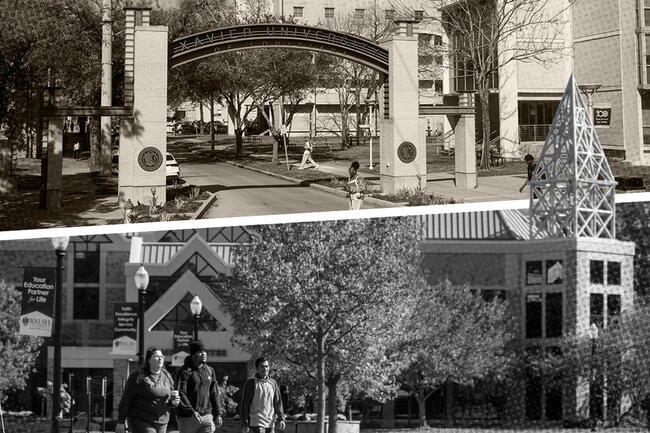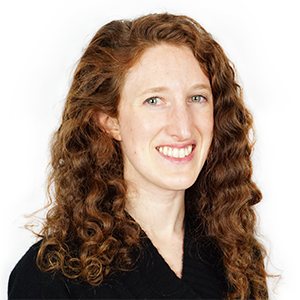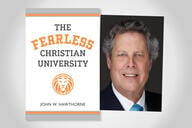You have /5 articles left.
Sign up for a free account or log in.

Walsh and Xavier are exploring new ways for their students to better access each other’s graduate programs.
Photo illustration by Justin Morrison/Inside Higher Ed | Xavier University | Walsh University
Walsh and Xavier Universities are embarking on a new partnership—part of Walsh’s broader efforts to promote resource-sharing among Catholic institutions.
Leaders of the two universities say Walsh, a small Catholic institution in Ohio, and Xavier, the nation’s only Catholic historically Black university, located in Louisiana, have much to offer each other given their different academic strengths. The partnership, cemented in a memorandum of understanding last month, will create pipelines for each institution to graduate programs they don’t offer that are available at the other.
For example, Walsh’s M.B.A. program will grant direct admission to Xavier business undergraduates who meet certain eligibility requirements. Walsh graduate programs in nursing, physical therapy, occupational therapy and exercise physiology will also offer an admissions advantage to students at Xavier, which is known for having the most Black graduates who go on to complete medical school. In turn, Xavier will create a streamlined pathway for Walsh biology and chemistry graduates to enroll in its pharmacy school.
“We have something they don’t. They have something we don’t,” so there’s potential for “great synergy,” said Mike Dunphy, vice president for academic affairs at Walsh University.
The two universities are still working through the details of how they’ll smooth the paths for each other’s students to select programs, he said; they are weighing different possibilities, like having graduate programs reserve spots for each other’s students, guarantee them interviews or both—much like partnerships Walsh has with some other institutions.
Marguerite Giguette, Xavier’s provost and senior vice president for academic affairs, said Xavier could potentially create a “three plus four” program for Walsh students, allowing them to enroll at the pharmacy school during their last year as an undergraduate as a time-saver, similar to partnerships Xavier currently has with Fisk University and others.
The goal is to expand “opportunities for our students … to be successful, no matter what area that they want to pursue,” she said. “It’s all about student success for me and for Xavier.” And while most Xavier students aren’t Catholic, she sees the two institutions as sharing a “foundation” of similar missions and values as a result of their Catholic connection.
Dunphy also hopes the partnership will help to diversify Walsh’s student body, in addition to making more graduate pathways available to its students.
“We’re trying to increase the connections to communities that are harder to find in our area and trying to do it nationally,” he said. Xavier is “well-known in the Black community, they’re very respected, and so it’s a natural fit” as a Catholic HBCU. The predominantly white university aims to increase its racial and ethnic diversity as well as “diversity of intellect, diversity of traditions, diversity of programs, diversity of approach—to us, it’s a much broader word.”
Creating a Catholic Network
For Dunphy, Walsh’s partnership with Xavier is the latest development in “a larger strategic effort” to connect with other Catholic institutions, nationally and internationally, and to join forces in various ways, from research to study abroad programs to graduate education options.
Over the last five years, Walsh has been working to grow its network of partnerships, including with multiple fellow members of the Cardinal Newman Society, an organization that endorses Catholic schools and universities that resist secular influence in Catholic education. Walsh has also partnered with faith-based institutions abroad, including the Catholic University of Erbil in Iraq and Australian Catholic University. This month, Walsh held a conference for its faculty about artificial intelligence and invited all its partner institutions to join in person or on Zoom.
“We’re so similar in our mission,” Dunphy said, yet “we have very different strengths in our curriculum … We are really trying to form a network of like-minded institutions that our students, faculty and staff members can connect to.”
He’s especially interested in fostering partnerships between Catholic undergraduate and graduate programs at different institutions with similar religious missions.
“This is a very intentional effort on my part to make sure that we’re connecting with people across academia where students who are devout Catholics can find places to go when they graduate,” he said.
Catholic colleges and universities already have organizations and collaborate with one another. Their presidents regularly meet at gatherings held by the Association of Catholic Colleges and Universities. Different types of Catholic institutions also have their own groups, such as the Cardinal Newman Society and the Association of Jesuit Colleges and Universities.
But Dunphy worries collaborations too often happen “in pockets” or as “one-offs here and there.” For example, the Cardinal Newman Society held its first national summit only last summer.
Donna Carroll, president of the Association of Catholic Colleges and Universities, wrote in an email to Inside Higher Ed that collaborative initiatives are happening across Catholic higher education, including program- and service-sharing partnerships and full-on mergers. She added that ACCU hosted a strategy summit last November with the “understanding that the vitality of our sector depends upon greater collaboration of all types—mission-centered, strategically timed, and data-driven.”
She praised the partnership between Walsh and Xavier as “a great example of two institutions with complementary offerings coming together to increase opportunities for students, without duplicating programs,” noting that such opportunities are “enriching for students and institutions, alike.”
Giguette said Xavier has also emphasized fostering partnerships with other institutions, including some universities abroad, to open up as many programs and services as possible to its students and to make Xavier’s own sought-after academic offerings, such as the pharmacy school, accessible.
“It’s all about giving our students opportunity. That’s really what it’s about,” she said.
For small institutions like Walsh, which has fewer than 3,000 students, Dunphy believes that building partnerships and sharing resources is crucial. Enrollment and financial hardships have forced a number of small private institutions to merge or close in recent years, including Catholic colleges and universities.
In particular, the pressures of the COVID-19 pandemic showed higher ed institutions that “sharing resources, sharing expertise, sharing opportunity, that’s the way to go, going into the future,” Dunphy said. “The siloing stuff just doesn’t work anymore … This whole concept of collaborating intentionally is going to be the new wave of higher education.”





